Rules for installing a stove in a bath
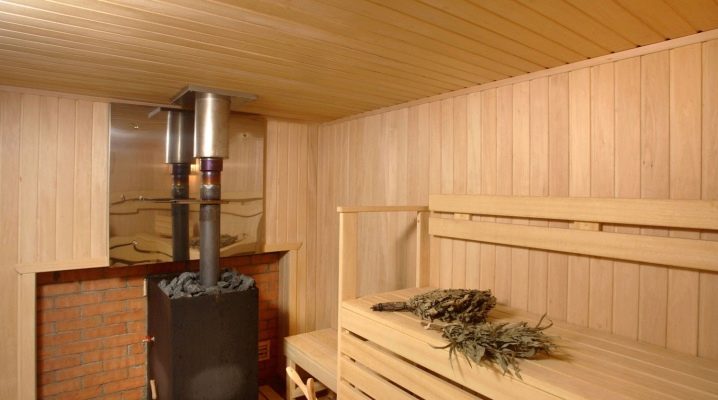
The installation of the stove is the most important stage in the arrangement of the bath space. Effective heating of the steam room can only be achieved with a competent approach. To understand the process, you need to consider the details of the installation of the furnace structure, as well as the algorithm for all work.

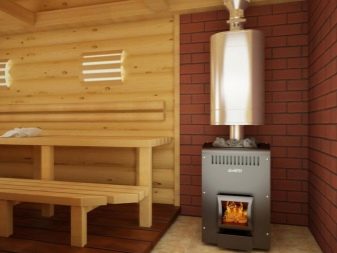
Peculiarities
Sauna stoves are manufactured taking into account the following parameters:
- minimum dimensions;
- warm-up speed;
- minimum amount of fuel;
- optimal price.
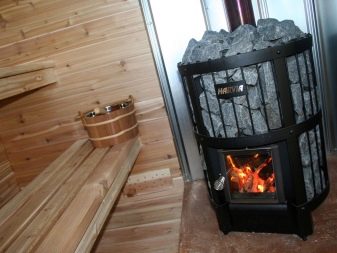
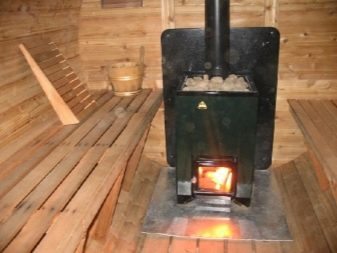
An important feature of the sauna stove is the speed of heating the room. Therefore, when choosing, attention is paid to the correspondence of the dimensions of the unit with the parameters of the building. It should be borne in mind that steam is an important component both for the steam room and for the entire building.
The heating rate is directly related to the correct preparation of the site for the oven. Its classic location in the bath should provide heating for all premises of the building. The peculiarities of these measures imply the obligatory equipping with a remote fuel channel.
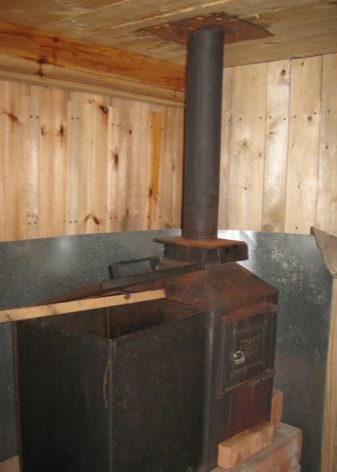
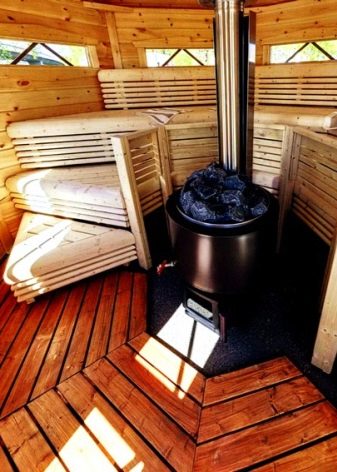
The layout of the unit requires extremely careful insulation of the structures. This work must be prepared with the highest temperatures in mind. Especially hot in the chimney of the unit.
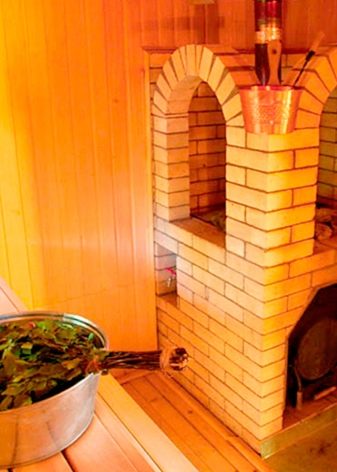
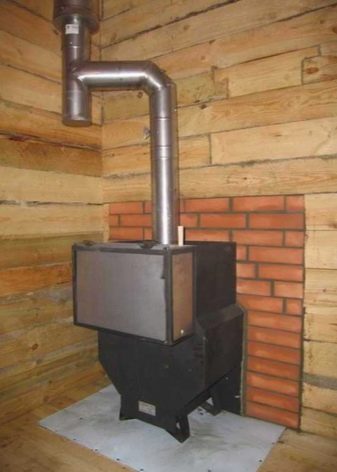
The choice of a place for a stove in a bath should be determined by a number of the following factors:
- design features of the stove;
- the principle of the device.
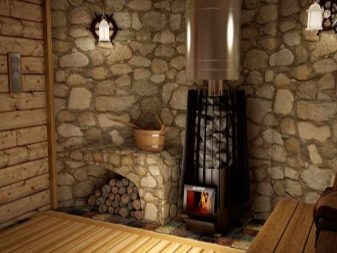

The possibility of choosing a place is somewhat limited by an iron sauna stove with a remote firebox. But modern options are equipped with a telescopic firebox. If necessary, the length of such a firebox can be increased, so the options for choosing a location are also expanding. For uniform heating, the stove is installed taking into account the spread of convection flows. The best option for placing the stove is in the steam room, with a firebox in the dressing room. Thus, you will achieve heating of two rooms at once.
The optimal cost of the device can be achieved by self-manufacturing a stove for a bath.
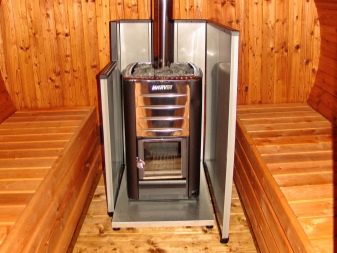
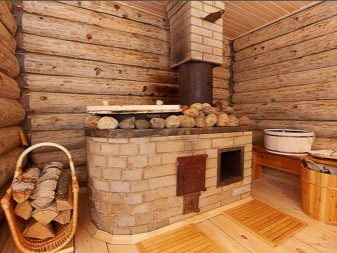
Required tools
When planning the installation of a sauna stove, you need to take care not only of efficiency, safety and functionality, but also of the necessary tools.
To improve the quality of installation, you should first prepare:
- steel sheets (8 mm thick);
- a pipe with a circumference of about 50 cm;
- metal rods, section 100 mm;
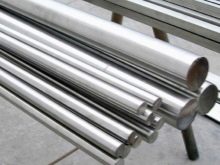
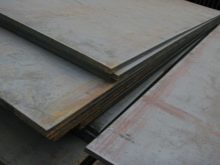

- grate, furnace, blower doors;
- chimney;
- hot water taps;
- a tank for water in a volume of up to 1 cubic meter.
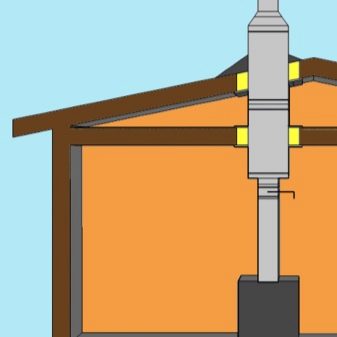
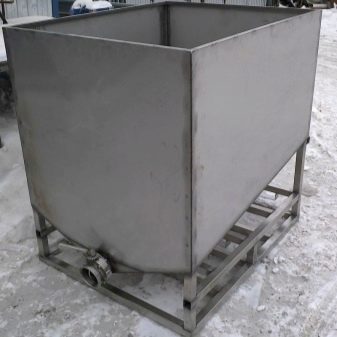
For the installation of the structure, a welding machine, a grinder will definitely come in handy. It is important to select all component materials in accordance with the existing SNiPs and PPBs. For example, galvanized asbestos pipes are not recommended for use.
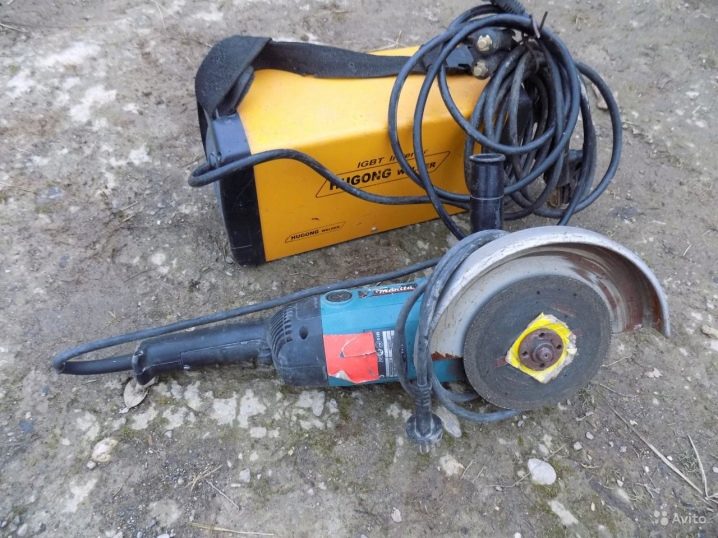
How to install it yourself?
When choosing the correct location for the stove, take into account the location of the parts that need to be accessible for periodic inspection. A screed with insulation, poured over a primed base, at the same stage of construction with a foundation, will serve as a reliable and high-quality pedestal. If the floors in the bath are non-combustible, for example, cement or concrete floors, no additional protection is needed. Fire retardant materials are used only for wooden floors.
If the soil on the site is heaving, it is not necessary to lay for the stove, which is not connected with the foundation on the screw piles of the slab pedestal. It can be associated with the base of the bathhouse if the device is shallow. For the bundle, the bases of both the furnace and the bath are anchored.
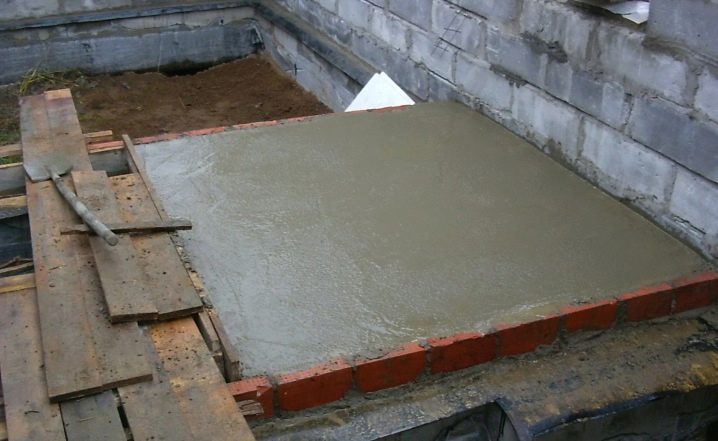
Rules for arranging a pedestal for a stove
The dimensions of the base must be 20 cm larger than the metal stove with protective screens. The height of the base must be equal to the depth of the bath foundation. It is permissible to fill the free part with brickwork.
The technological step-by-step process involves:
- Preparation of the pit.
- Formwork installation.
- Arm netting.

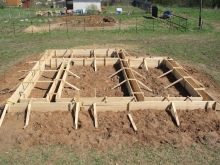
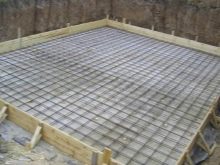
- Filling with cement mortar.
- Covering the settled base with a layer of waterproofing.
- Laying bricks in several rows.
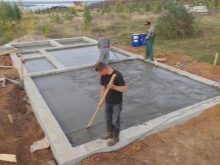

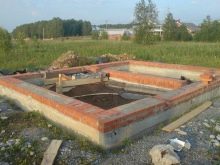
A separate plinth for the heat exchanger can be avoided if the log and subfloor have sufficient strength to support the weight of the structure.

Solution options:
- laying a sheet of metal on top of a basalt sheet;
- laying a brick or stone base under the stove;
- laying ceramic or porcelain stoneware tiles.
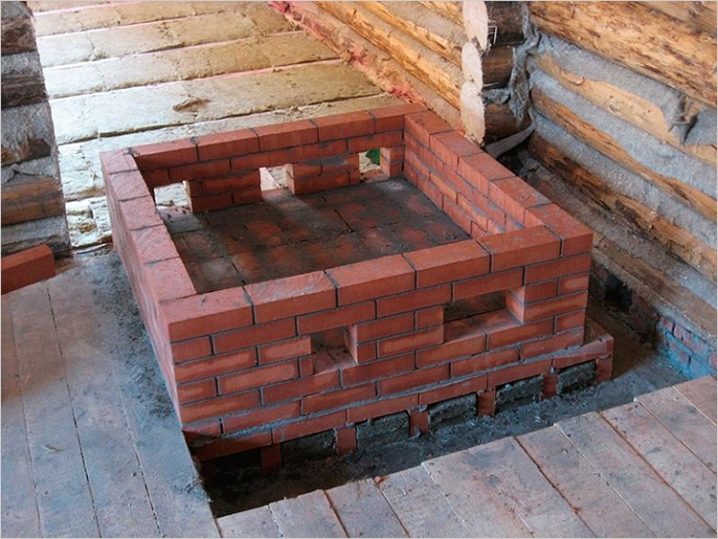
The vertical parts that will be in contact with the structure are protected by heat-resistant sheet material. The specific values of the parameters are indicated in the instructions of the manufacturer of the sauna stove. The values are interrelated with the real thermal level of the stove and its structural nuances.
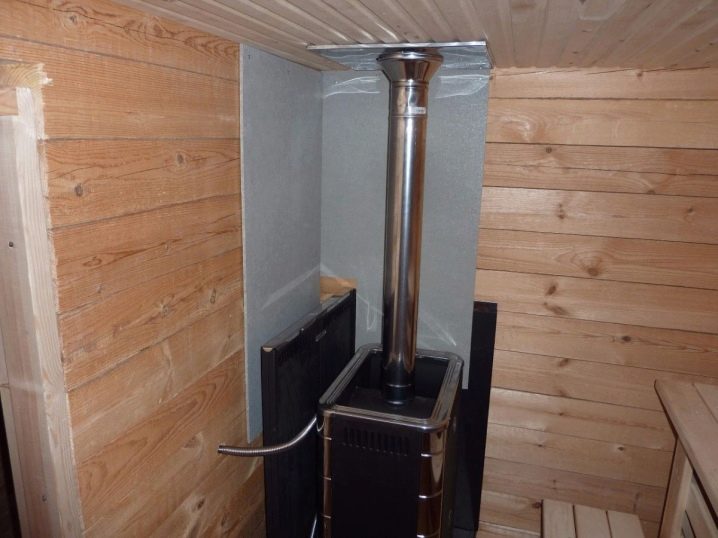
Oven with a remote fuel channel
Consider the installation of a factory stove-heater with a remote fuel channel, which is the best suited for a village bath.
The standard instruction assumes the following stages of work:
- arrangement of an opening in the wall;
- thermal insulation of the stove;
- fire protection of walls;
- installation of a chimney structure.
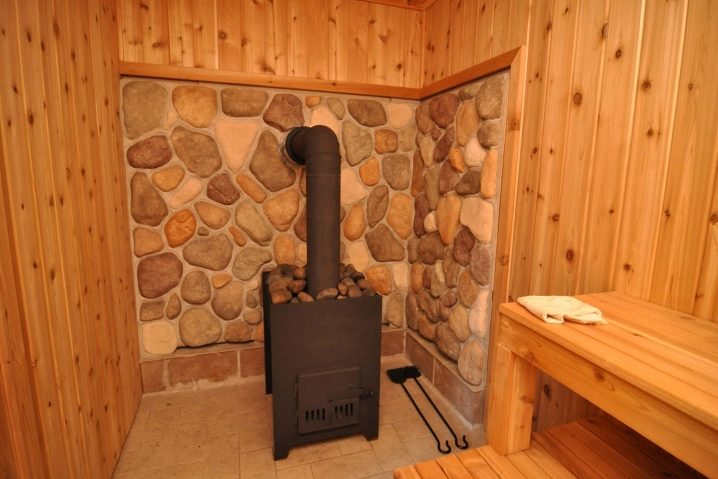
The area near the structure is covered with clay, cement mortar or liquid glass. It is already permissible to put the stove on this basis. The place for the stove is precisely aligned with the direction of the chimney. An opening is prepared in the wall, next to the place designated for it. It should be larger than the ash pan.
The surface of the wall is protected with bulk-type mineral insulation. The wall adjoining the stove body is finished with a heat-resistant material. In frame baths, as well as in timber structures, the junction area is laid out with bricks. Thermal protective tiles are glued on top of the masonry. To fix the furnace, special hinges are used, screwed with anchors.
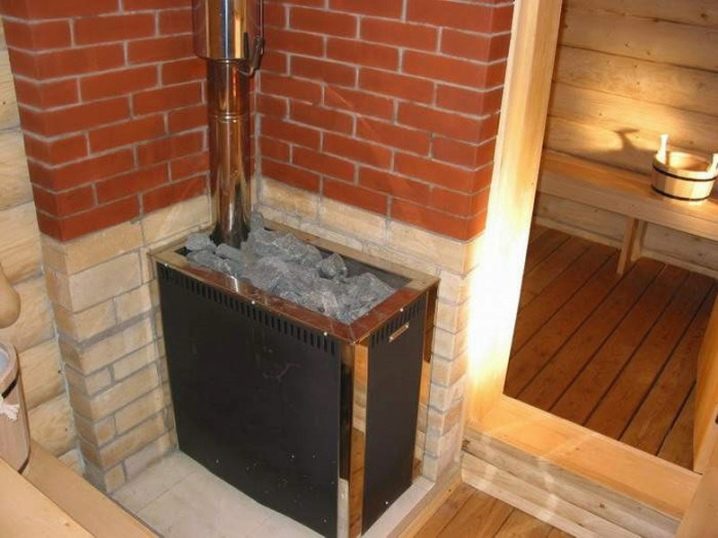
An ideal chimney should not have turns and bends, and the first meters must be made of heat-resistant steel. For the pipe, it is desirable to have a housing made of heat-insulating material. The standard straight pipe is led out through the roof. Therefore, assembly openings are prepared at the designated points in the roof. The space around it is filled with mineral wool and asbestos sheet. The pipe is closed with a casing.
In general, with the right approach, the installation of the stove will take two to three working days. However, it will be possible to use it in at least seven days. It is necessary that the laying under the foundation, protective systems receive the necessary degree of reliability. Filling the heater with stones is only possible after 14 days. During this period, the pedestal under the oven will give the required shrinkage.
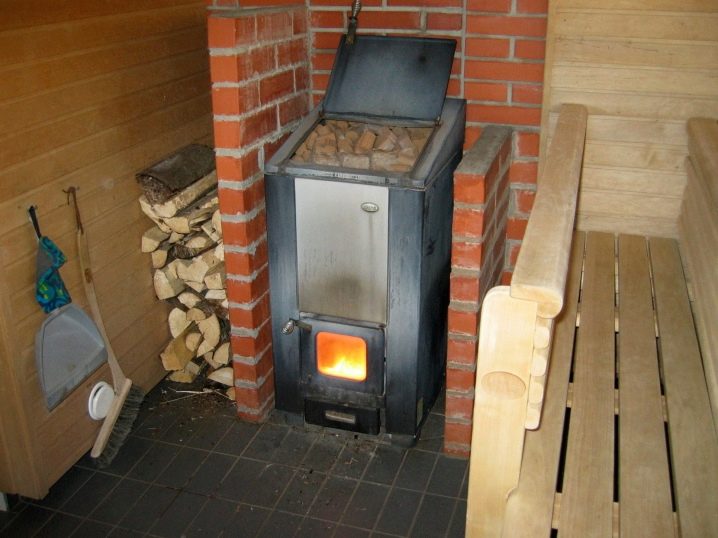
Metal oven
Metal ovens for steam rooms are on a wave of popularity. Iron models are wood-fired, coal-fired and other types of fuel. One of the positive qualities of the design is its small size. The unit is optimal for location in small baths.
For a purchased stove, even a cast iron stove, a monolithic slab under the base is often not required. Another positive point is that a small metal structure warms up faster. A brick oven, for example, will warm up for 3-4 hours. But a brick stove provides a more uniform heating of the premises.
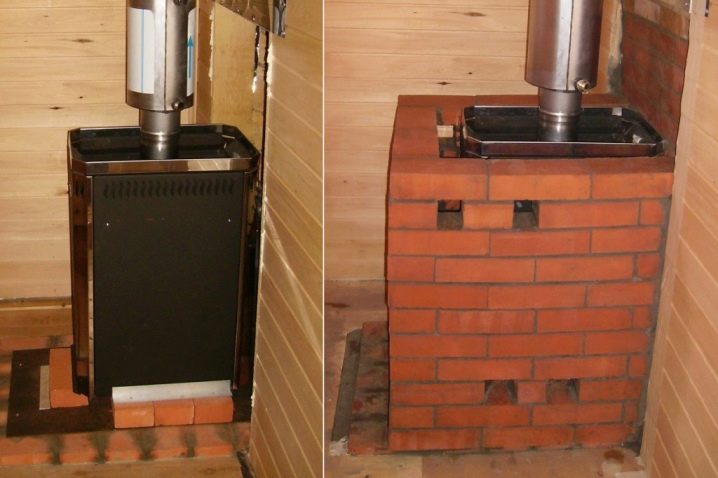
The shapes of metal stoves are:
- vertical;
- horizontal;
- barrel-shaped and other interesting configurations.
The design implies the obligatory presence of a hot water tank and a grid for the heater
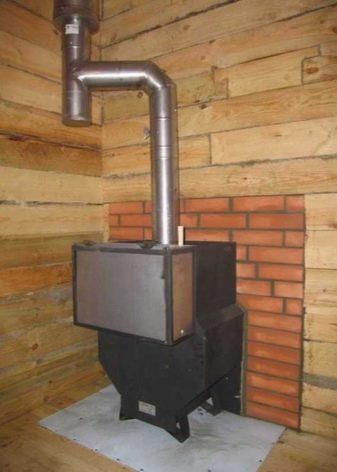
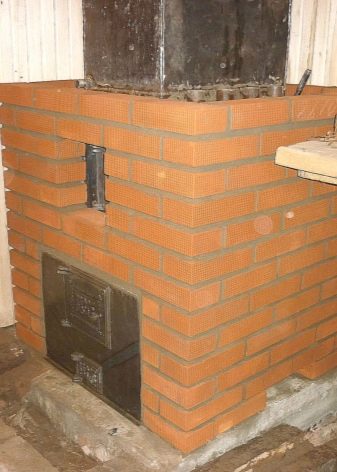
Heaters
Heaters with a separate steam room create an ideal microclimate for visitors. Therefore, maximum attention is paid to the construction of the heater.
She must be:
- productive;
- safe;
- compact.
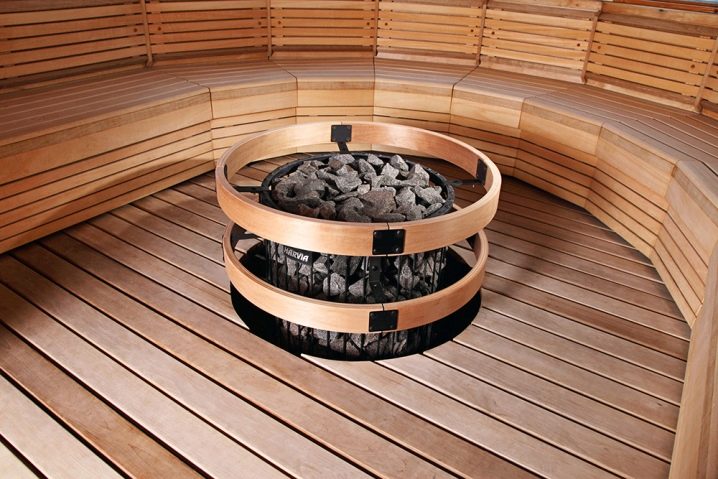
The rules for arranging a heater imply the mandatory presence of:
- metal bases;
- guides for cutting the steam flow.
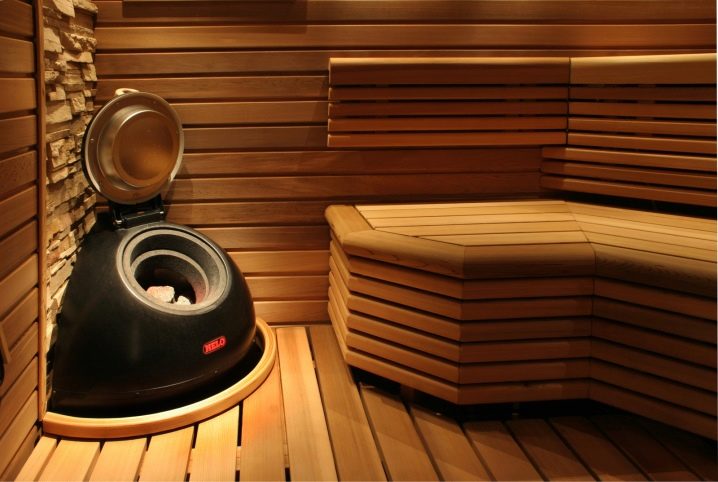
Bath stones are usually placed on a waterproof base.
Heater stoves are of the permanent type. Unlike other types of stoves, the stonework accumulates heat better, as it acts as a kind of evaporator. A liquid is poured onto the surface of the stones, which, under the influence of the heat, turns into bath steam.

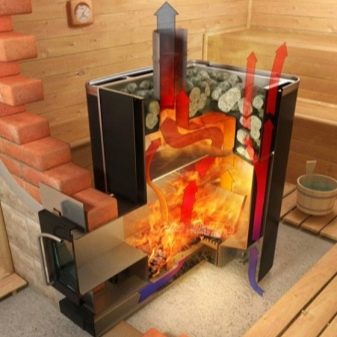
Moreover, if a waterproof stove is installed above the firebox, steam can be obtained during the burning of firewood and they will not be extinguished with water. If the stove is located in a simple crate, steam can be obtained only after the fuel has completely burned out.
The temperature of stones in the first placement option can reach up to 600 degrees, and in the second placement option up to 300-350 degrees. It is believed that with optimal placement of stones, soft steam should not cause burns and make breathing difficult.
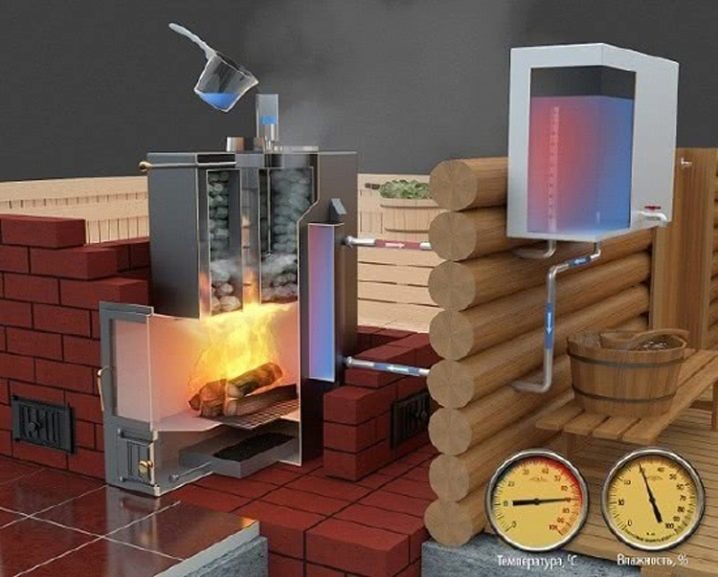
Tips & Tricks
Despite all the limitations of fire safety, the layout of the sauna stove inside the steam room is allowed in different ways. For example, if you move the device to a corner, you can free up a lot of workspace. Placing the stove in the middle of the wall will allow you to install benches and shelves on the sides, increasing the number of seats. However, the latter option is not very easy to maintain and during bath procedures.
The instructions for installing the stove in a bath assume that the unit is as close to the wall as possible. In this case, the distance to the combustible materials of the walls should be at least one meter. The rules for installing the unit in a finished bath involve marking the place with respect to the lag. Thus, an even distribution of the load on the supports will be ensured.
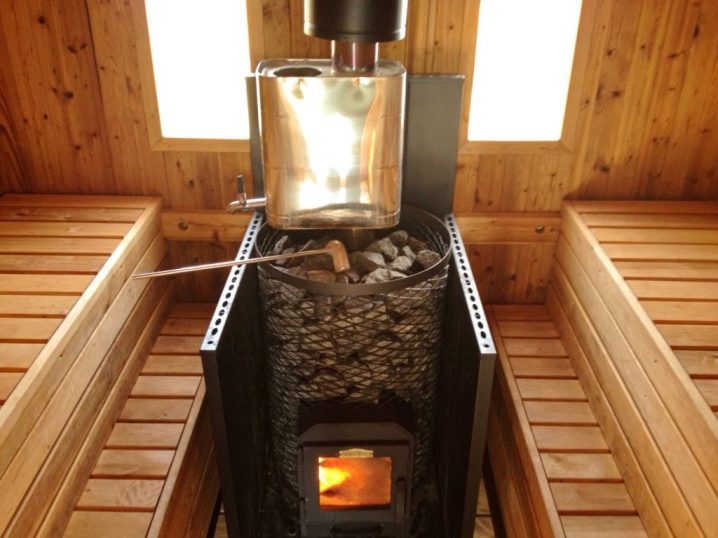
Wooden surfaces are covered with a protective base, which will ensure high resistance of wood to temperature extremes. Heating efficiency is better if the combustion part is very close to the base. Some craftsmen even specially install the stove, deepening it in the floor by 10-15 cm so that the boards become warm. When the stove is installed below the floor, it is inconvenient to put firewood in the firebox.

Manufacturers and reviews
Separate companies usually specialize in the production of heating and sauna stoves. For example, "Thermosphere" known for its aggregates, which have been on the market for over four years. Products are made from thick-walled materials using innovative technologies.
The best option for a sauna stove from this Bashkir company "Gorynych 3"... The model is equipped with a longitudinal combustion system, which provides heating of the entire bath building without an additional boiler and heating radiators.

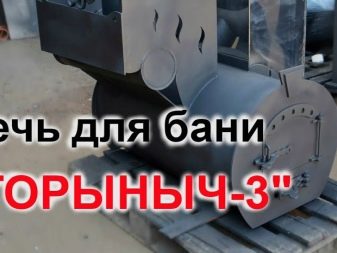
Another well-known manufacturer in the domestic market is the company "Teplodar"... The most popular model of this company "Taiginka 16 T"... The small-sized structure will heat the steam room up to 16 cubic meters. At the same time, the system is designed in such a way that both the shower room and the rest room of the small bathhouse will be warm. Reviews about the stove are mostly positive.
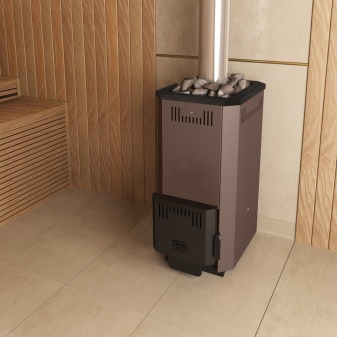
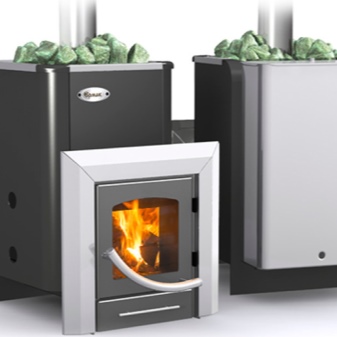
Ovens "Ermak" are presented on the market with a wide range of designs with different characteristics. Heating equipment can run on wood, electricity, gas.
Notable variations:
- "Ermak 12" - designed for 6-14 cubic meters. m steam room;
- "Ermak 16" - 8-16 cubic meters m;
- Ermak 24 - 12-24 cubic meters m;
- "Ermak 30" - 15-30 cubic meters m.
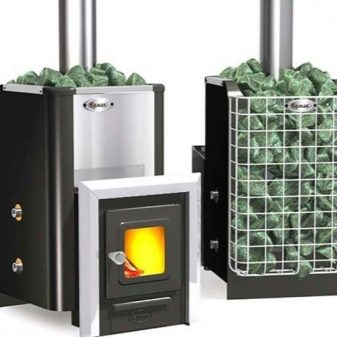
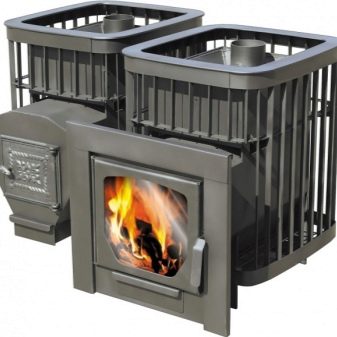
Users note the special attractive design of the domestic ovens "Barbara"... These devices have secured a stable demand and have no complaints. Enough good reviews from the company "Hephaestus", producing solid units for baths up to 120 cubic meters. m. The main advantage of these devices is high quality, reliability and good performance.
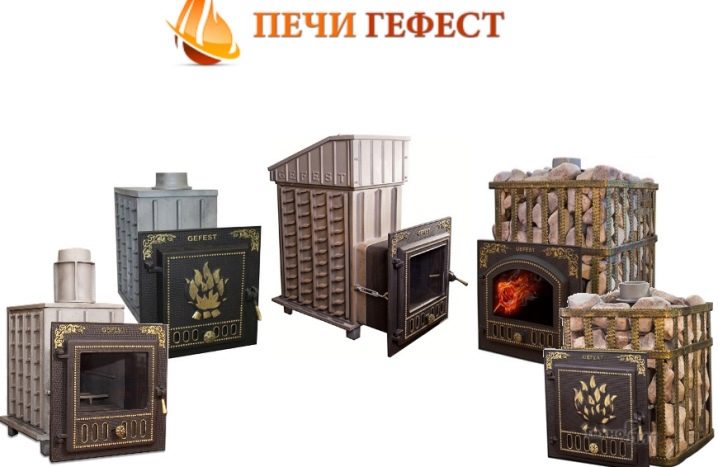
Successful examples and options
The stove is located inside the steam room in the center, with benches and shelves on the sides.
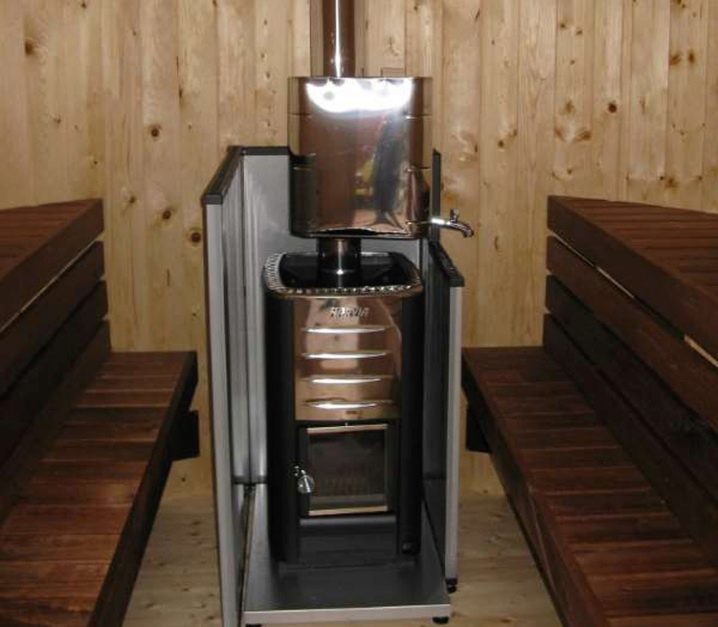
Stove installed in the corner of the steam room, equipped with a stove to create soft steam.

Metal sauna stove with a metal fire shield, which is built into the wall itself.

Brick-faced sauna stove. This option will protect you from burns. The heat of the stove will not decrease due to the air gap between the body and the finishing material.
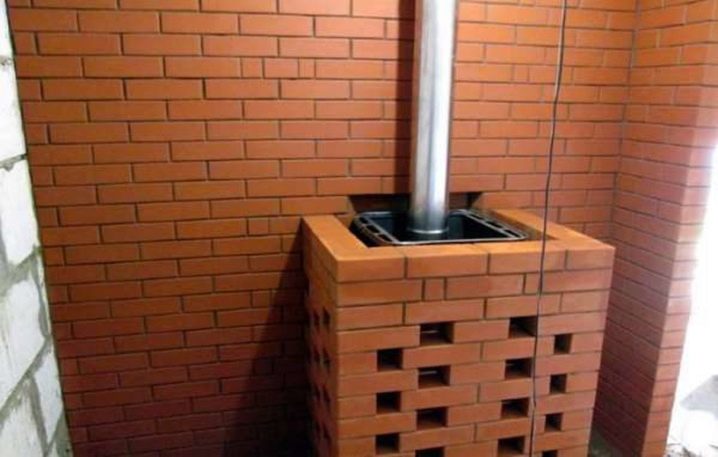
For tips on installing the stove in a bath, see the video below.




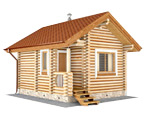
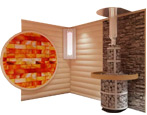
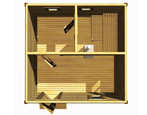
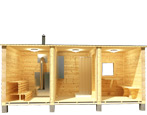
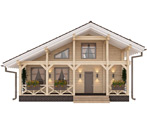
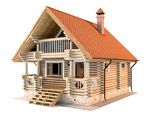


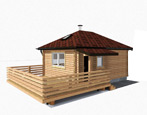
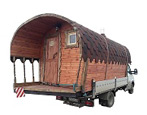


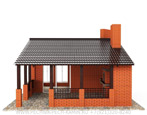

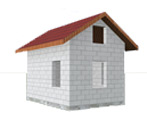

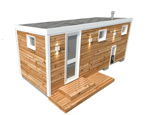
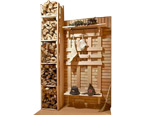
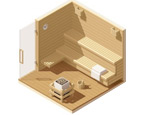
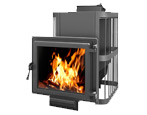
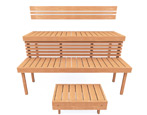
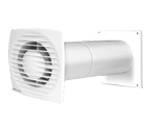

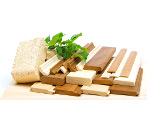


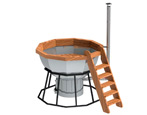
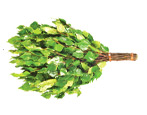
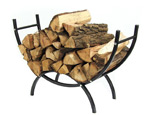
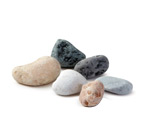
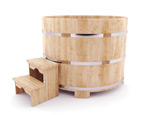
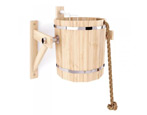
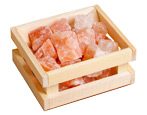


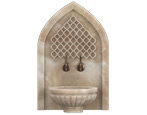

























































The comment was sent successfully.